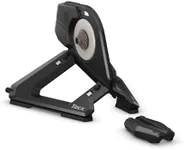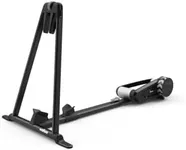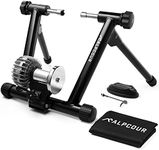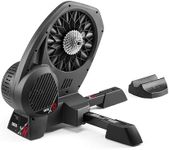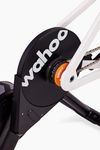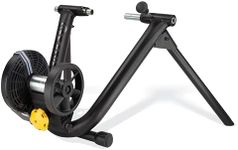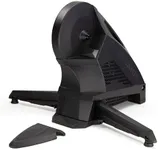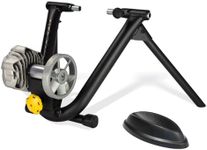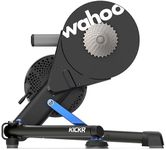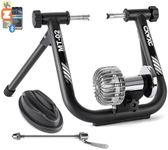Buying Guide for the Best Fluid Bike Trainer
Choosing the right fluid bike trainer can significantly enhance your indoor cycling experience. Fluid bike trainers use a hydraulic fluid to create resistance, which provides a smooth and realistic ride feel. When selecting a fluid bike trainer, it's important to consider several key specifications to ensure you get the best fit for your needs. Understanding these specs will help you make an informed decision and enjoy your indoor training sessions to the fullest.Resistance LevelsResistance levels refer to the amount of resistance the trainer can provide. This is important because it determines how challenging your workouts can be. Fluid trainers typically offer progressive resistance, meaning the harder you pedal, the more resistance you encounter. For beginners or casual riders, a trainer with lower resistance levels may be sufficient. Intermediate and advanced cyclists might prefer higher resistance levels to simulate more intense outdoor riding conditions.
Noise LevelNoise level is the amount of sound the trainer produces during use. This is crucial if you plan to use the trainer in a shared or quiet space. Fluid trainers are generally quieter than other types, but there can still be variations. If you need a very quiet trainer, look for models specifically designed for low noise. For those who don't mind a bit of noise or have a dedicated training space, noise level might be less of a concern.
CompatibilityCompatibility refers to whether the trainer can accommodate your bike's wheel size and axle type. This is important to ensure your bike fits securely and functions properly on the trainer. Most fluid trainers are compatible with a range of wheel sizes, but it's always best to check the specifications. If you have a bike with a unique axle type or size, make sure the trainer supports it or offers adapters.
StabilityStability is how steady and secure the trainer feels during use. This is important for safety and comfort, especially during intense workouts. Trainers with a wide base and sturdy construction tend to offer better stability. If you plan to do high-intensity training or sprints, look for a trainer with excellent stability. For lighter use, a less robust model may suffice.
PortabilityPortability refers to how easy it is to move and store the trainer. This is important if you have limited space or plan to transport the trainer frequently. Lighter and foldable models are easier to move and store. If you need to set up and take down your trainer often, look for one that is designed for easy portability. For those with a dedicated training space, portability might be less of a priority.
ConnectivityConnectivity refers to the trainer's ability to connect with apps and devices for tracking and enhancing your workouts. This is important for those who want to monitor their performance or use virtual training platforms. Some trainers come with built-in sensors or are compatible with external sensors and apps. If you enjoy tracking your progress or participating in virtual rides, look for a trainer with good connectivity options. For those who prefer a more straightforward setup, connectivity might not be as crucial.
